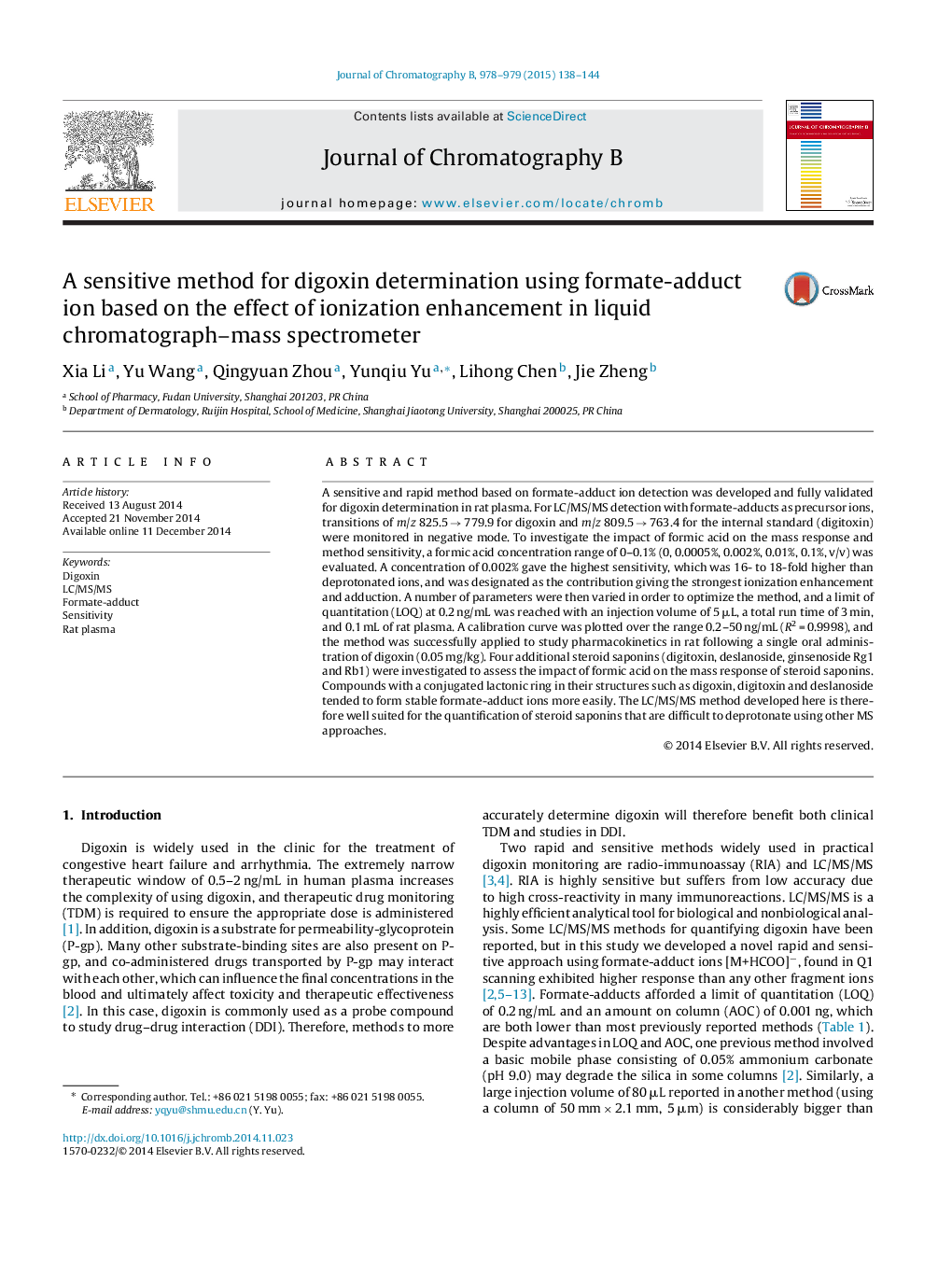| Article ID | Journal | Published Year | Pages | File Type |
|---|---|---|---|---|
| 1212325 | Journal of Chromatography B | 2015 | 7 Pages |
•It is a more sensitive LC/MS/MS method firstly reported to determine digoxin with the formate-adduct ion as the precursor ion.•The intensity of digoxin formate-adduct was proved to be 16–18 times stronger than the deprotonated ion.•The new method is rapid, sensitive, less sample volume and injection volume needed.•Steroid saponins with a conjugate lactonic ring in their structure were found to be easier to form stable formate-adduct ion.
A sensitive and rapid method based on formate-adduct ion detection was developed and fully validated for digoxin determination in rat plasma. For LC/MS/MS detection with formate-adducts as precursor ions, transitions of m/z 825.5 → 779.9 for digoxin and m/z 809.5 → 763.4 for the internal standard (digitoxin) were monitored in negative mode. To investigate the impact of formic acid on the mass response and method sensitivity, a formic acid concentration range of 0–0.1% (0, 0.0005%, 0.002%, 0.01%, 0.1%, v/v) was evaluated. A concentration of 0.002% gave the highest sensitivity, which was 16- to 18-fold higher than deprotonated ions, and was designated as the contribution giving the strongest ionization enhancement and adduction. A number of parameters were then varied in order to optimize the method, and a limit of quantitation (LOQ) at 0.2 ng/mL was reached with an injection volume of 5 μL, a total run time of 3 min, and 0.1 mL of rat plasma. A calibration curve was plotted over the range 0.2–50 ng/mL (R2 = 0.9998), and the method was successfully applied to study pharmacokinetics in rat following a single oral administration of digoxin (0.05 mg/kg). Four additional steroid saponins (digitoxin, deslanoside, ginsenoside Rg1 and Rb1) were investigated to assess the impact of formic acid on the mass response of steroid saponins. Compounds with a conjugated lactonic ring in their structures such as digoxin, digitoxin and deslanoside tended to form stable formate-adduct ions more easily. The LC/MS/MS method developed here is therefore well suited for the quantification of steroid saponins that are difficult to deprotonate using other MS approaches.
